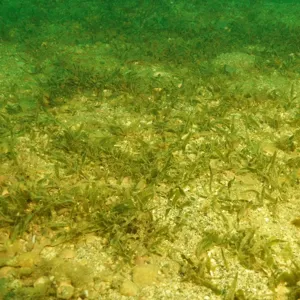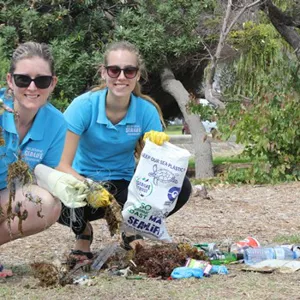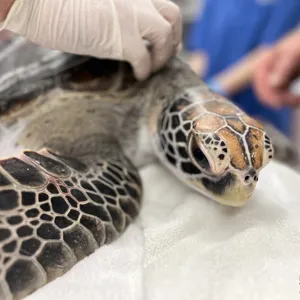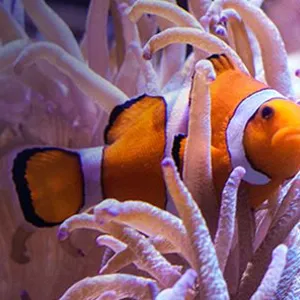Turtle Release
New Zealand's only Turtle Release Centre
As part of their rehabilitation, rescued turtles make the Turtle Rescue centre at Kelly Tarlton's Aquarium their new home, serving as ambassadors for the marine species.
Since 1991, SEA LIFE Kelly Tarlton’s Turtle Rehabilitation Centre has rehabilitated and released more than 50 turtles and is New Zealand’s only turtle rehabilitation centre. There is now an experienced and dedicated team to care for these amazing creatures. The affectionately known 'Team Turtle' is made up of SEA LIFE Kelly Tarlton’s, Auckland Zoo and the Department of Conservation with a special mention to Air New Zealand.
Of the seven marine turtle species, five are found in New Zealand waters and all of them are either endangered or critically endangered. Experiences like Turtle Rescue help educate the broader public on how their behaviour in and around the water can impact local marine life.
Turtles face a number of threats in the wild including boat strikes and accidental plastic ingestion or entanglement. At SEA LIFE Kelly Tarlton’s we aim to educate the public on the threats turtles face and encourage behavioural change by choosing to reuse being mindful of plastic pollution.
Turtle Rescue and Turtle Rehabilitation Centre also aims to educate Kiwis on the important story around what type of turtles inhabit our coastlines, why and how they got here and where the turtles go once they are released.
Team Turtle
'Team Turtle' is a collaborative partnership consists of SEA LIFE Kelly Tarlton's, Auckland Zoo and Department of Conservation; with support from Air New Zealand.
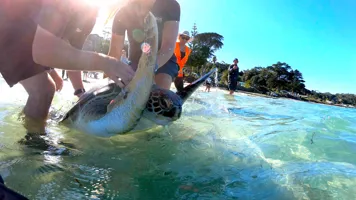
Turtle Release 2022 part 2 - Connie's Release
Second release of 2022, one of the Green Sea Turtles in our care Connie gets released for the second time after her first release back in 2019 at the Poor Knights Islands. Two years she washed up again at Rangiputa Beach in the Far North of the North Island.
After 18 months of rehabilitation, she was released back at Rangiputa beach.
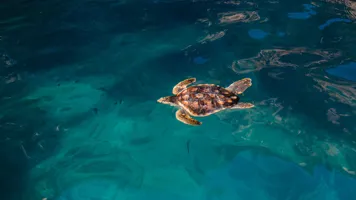
Turtle Release 2022
Trio of sea turtles have been released back to the ocean in early autumn of 2022.
Team Turtle were joined by kaumatua of Ngātiwai and students from Te Kura o Waikare for the heartwarming release of Puck, Taka and Delta who returned to the ocean at Poor Knights Islands Marine Reserve.
Find out more about the release here.
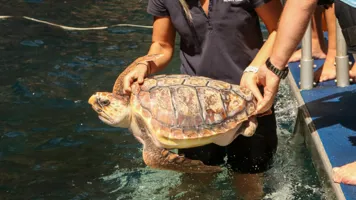
Turtle Release 2021
In 2021, Team Turtle releases two successfully rehabilitated turtles.
The two turtles were Kibou the Loggerhead Turtle, Spock the Green Sea Turtle. They were both found on Muriwai Beach suffering serious injuries and health issues.
Find out more about the release here.
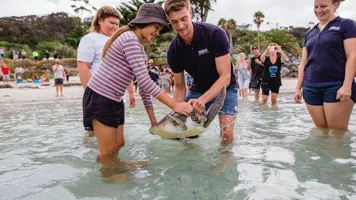
Turtle Release 2020
In 2020, Calvin the Green Sea Turtle was successfully released into the ocean at Rangiputa Beach by SEA LIFE Kelly Tarlton's.
Find out more about the release here.
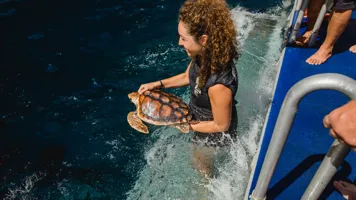
Turtle Release 2019
In 2019, SEA LIFE Kelly Tarlton’s Auckland releases three successfully rehabilitated turtles.
The three turtles were Jaxon the Loggerhead Turtle, Connie the larger Green Sea Turtle and Toby the smaller Green Turtle.
Find our more about Jaxon, Connie and Toby's release here.
What is flipper tagging?
Flipper tagging is by far the most common type of tagging carried out. With this method, a tag (usually titanium) is attached to the flipper with a unique number which identifies the turtle. SEA LIFE Kelly Tarlton's has a permit to rehabilitate and release turtles that only allows us to use flipper tags.
What should I do if I find a flipper-tagged turtle?
The most important thing to remember if you find or catch a tagged turtle is to not remove the tag/s from its flippers! Aside from causing the turtle pain, losing these tags means that the next time this turtle is sighted, we won’t know it’s history and will, therefore, lose a lot of valuable information.
If you do find or catch a tagged turtle, make sure you write down the following information:
1) Tag number
2) Date
3) Location caught
4) How the turtle was caught
5) What has happened to the turtle
What is satelite tagging?
Satellite tagging is the other type of tagging undertaken but is less common than flipper tagging, mainly due to the high costs involved. Satellite tags are radio transmitters that are attached to the carapace (shell) of the turtle. A turtle with a satellite tag attached will transmit a signal to satellites orbiting earth within a certain time interval. Information generated from satellite tags includes location, dive time and other parameters. In all cases, turtles receiving satellite tags also have flipper tags applied as flipper tags will remain longer on a turtle than will the transmitter.
Have you satelite tagged before?
Yes, we sure have! In 2016, SE LIFE Kelly Tarlton's satellite-tagged Nebs. Nebs was a peculiar case because she’d been rehabilitated and released but washed up again many months later. We argued that if she washed up a third time we’d need to know where she is to rescue her. Her release was also done as part of a scientific project by New Zealand’s leading turtle researcher Dan Godoy. In an,y case where we satellite tag a turtle the request needs to be submitted to Department of Conversation for approval or alternatively Dan Godoy has a special permit so can satellite tag any turtle he likes.
Why don't you satelite tag all turtles?
There are mixed views on this. On the one hand, we know little about turtles in New Zealand waters so it would be advantageous. On the other hand, no one has set up a research project on this so without a credible project in place some view satellite tagging as exploiting the individual animal. The question we need to ask ourselves is “what’s the benefit for the individual turtle?”. If we’re attaching a satellite tag just because we want to know where they go unfortunately that’s not good enough. There needs to be a scientific benefit.
